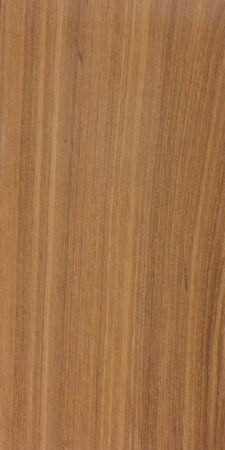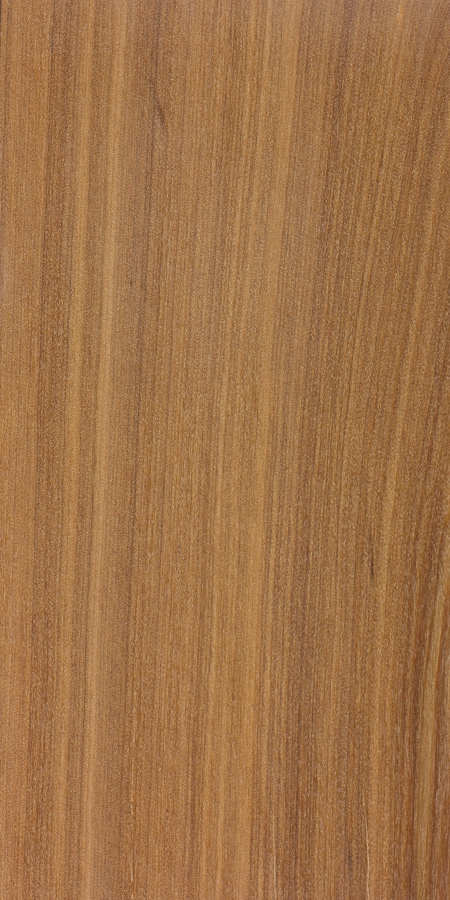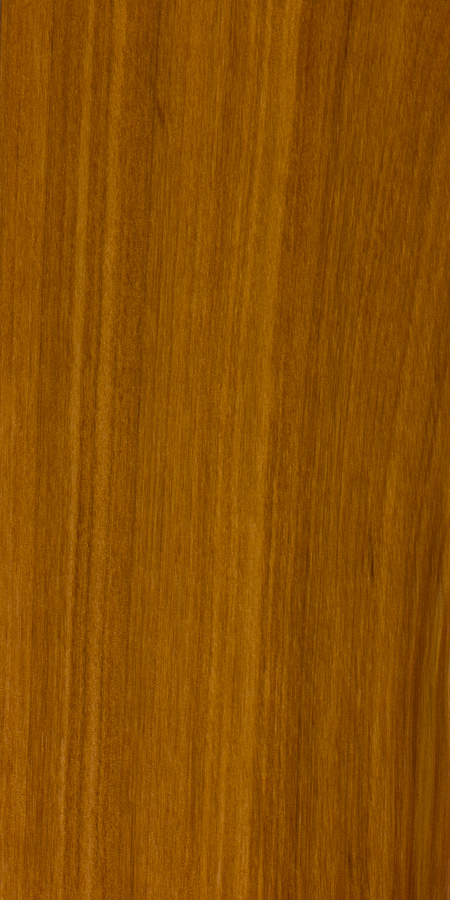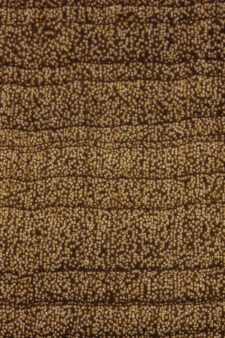Common Name(s): Ironwood, Lebombo, mecrusse, cimbirre
Scientific Name: Androstachys johnsonii
Distribution: Southeastern Africa and Madagascar; found in mountainous regions, especially the Lebombo Mountains in Southern Africa
Tree Size: 100-130 ft (30-40 m) tall,
2-3 ft (.6-1 m) trunk diameter
Average Dried Weight: 55.1 lbs/ft3 (885 kg/m3)
Specific Gravity (Basic, 12% MC): .72, .88
Janka Hardness: 2,610 lbf (11,610 N)
Modulus of Rupture: 18,560 lbf/in2 (128.0 MPa)
Elastic Modulus: 1,599,000 lbf/in2 (11.00 GPa)
Crushing Strength: 9,210 lbf/in2 (63.5 MPa)
Shrinkage: Radial: 5.9%, Tangential: 6.3%,
Volumetric: 12.1%, T/R Ratio: 1.1
Color/Appearance: Heartwood is light to golden brown, with darker stripes. Pale yellow sapwood isn’t always distinct from the heartwood.
Grain/Texture: Grain is generally straight or slightly wavy. With a fine. uniform texture and good natural luster.
Rot Resistance: Rated as very durable; good insect and borer resistance.
Workability: Despite its density, Lebombo ironwood works well. However, the wood dries slowly and is susceptible to checking during initial drying. Turns, glues, and finishes well.
Odor: No characteristic odor.
Allergies/Toxicity: Besides the standard health risks associated with any type of wood dust, no further health reactions have been associated with Lebombo ironwood—possibly because it somewhat obscure. See the articles Wood Allergies and Toxicity and Wood Dust Safety for more information.
Pricing/Availability: Not commonly exported, Lebombo ironwood is primarily used in domestic applications.
Sustainability: This wood species is not listed in the CITES Appendices, and is reported by the IUCN as being a species of least concern.
Common Uses: Flooring, furniture, heavy construction, turned objects, carvings, and other small specialty wood items.
Comments: This wood was reported to have been heavily exploited in Mozambique in the past, where it is known as cimbirre. The trees can grow in pure stands, and there are several forest reserves in Mozambique, parts of which are covered completely by Lebombo ironwood.
Images: Drag the slider up/down to toggle between raw and finished wood.
Identification: See the article on Hardwood Anatomy for definitions of endgrain features.
Porosity: diffuse porous
Arrangement: exclusively solitary
Vessels: medium to small, numerous to very numerous; brown deposits occasionally present, though difficult to see due to small pore size
Parenchyma: absent
Rays: narrow; normal spacing
Lookalikes/Substitutes: None.
Notes: None.
The Androstachys genus contains only one species, A. johnsonii. Furthermore, the family containing the genus itself is rather isolated from most other lumber-producing tree genera. Androstachys was formerly placed in its only family, Androstachydaceae. More recently, Androstachys was placed in a subfamily within Euphorbiaceae (spurge family), before genetic studies confirmed its place in its current location in the Picrodendraceae family. The only other commercial timber species within the Picrodendraceae family is Oldfieldia africana, African oak.
Related Content:











